How to Dress for Black Tie Optional Wedding
Black Tie Optional Dress Code Explained
What Is Black-Tie Optional?
Just like conventional black tie, black-tie optional events do take place in the evening. Black tie optional events are designed to communicate a judgment-free acknowledgment that not all men necessarily own or can afford a conventional black tie ensemble. In simplest terms, the definition of black tie optional is that the hosts of an event are planning on wearing standard black tie or the female equivalent and would hope that their guests try to do so as well, though it isn't necessarily required.
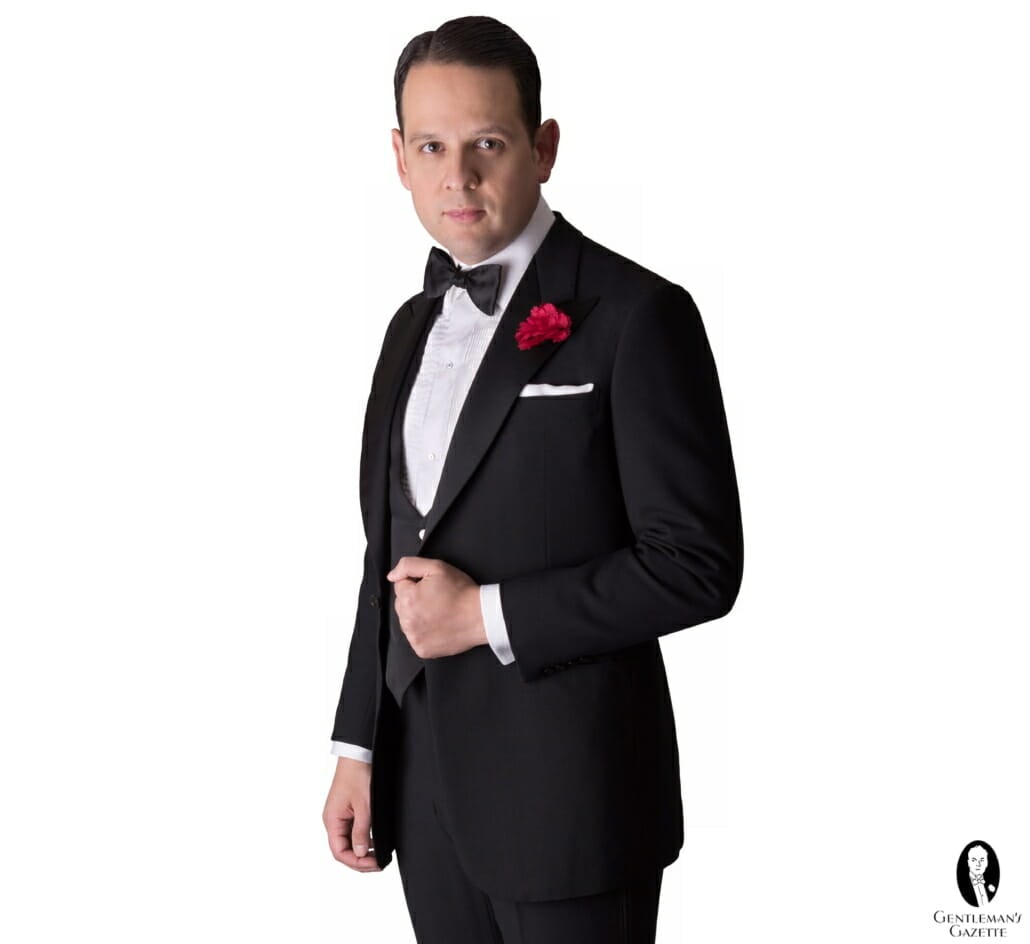
Classic Black Tie Tuxedo
So if a man wishes to dress in a standard black-tie outfit for a black-tie optional event, he's perfectly welcome to do so. In fact, if a man owns one or perhaps more standard black-tie ensembles, he should look at black-tie optional events as a good opportunity to wear them and to dress to that high standard. An important note on this topic, if a man does choose to wear a standard tuxedo to a black-tie optional event, he should still assemble the tuxedo in accordance with all of the traditional rules of proper black-tie. The optional in the black-tie optional dress code isn't an excuse to try to dress down parts of a conventional tuxedo or incorporate other less formal elements.
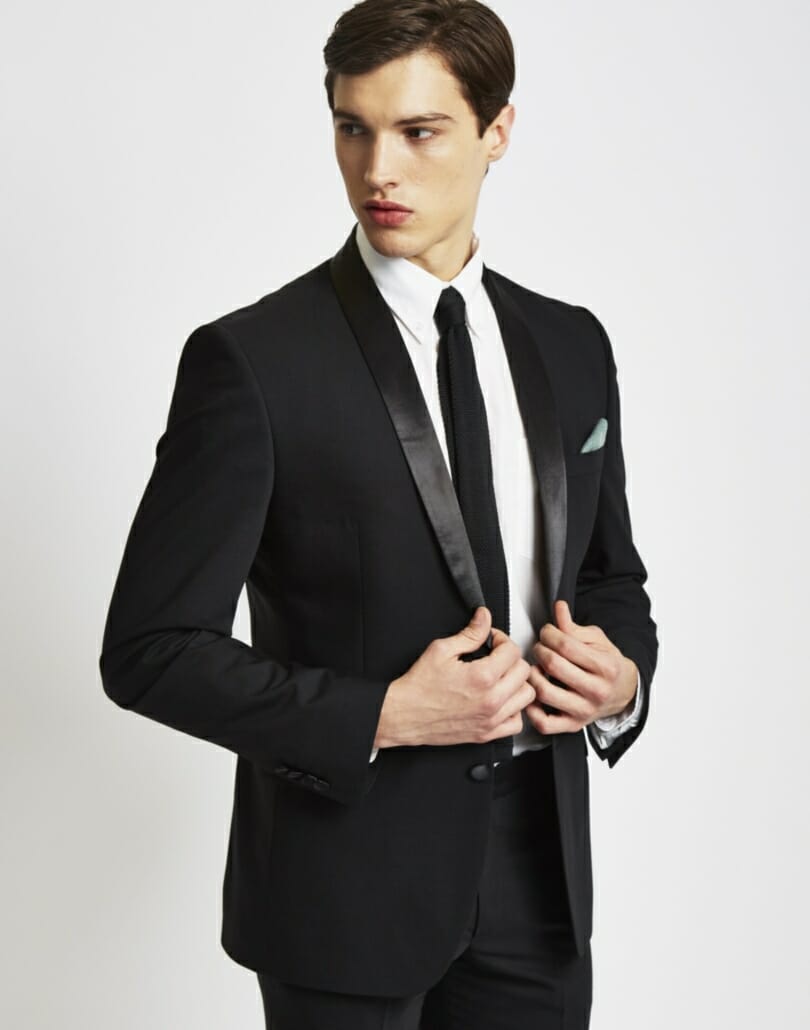
Modern iterations of black tie can reduce the outfit to a common black suit.
"Optional" Defined
"Optional" is for men who don't own traditional black-tie ensembles. It simply suggested that these men dress as formally as they are able. This could mean renting a tuxedo but in our opinion, most men would be better suited to simply following the guidelines we're about to lay out. As you should be well aware, fit is the most important thing when a man is assembling any ensemble and it stands to reason that 99 times out of a hundred, something that a man already has in his own closet is going to fit him better than a rented tuxedo ever could. In other words, if a man finds himself attending an increasing number of black-tie optional or conventional black-tie events, he should look into purchasing a tuxedo of his own rather than having to go through this conundrum of always considering renting or finding something else in his own closet.
What To Wear
What should a man who doesn't own a tux wear to a black-tie optional event? In the broad strokes, here's the overall dress code: a dark suit, a white shirt, a dark conservative tie, dark over the calf socks, black leather shoes, and perhaps a few conservative accessories. With those items listed generally then, let's now go into a bit more depth on breaking them down one by one so that a man will be sure to look good if he's at a party with other perhaps tuxedo wearing guests.
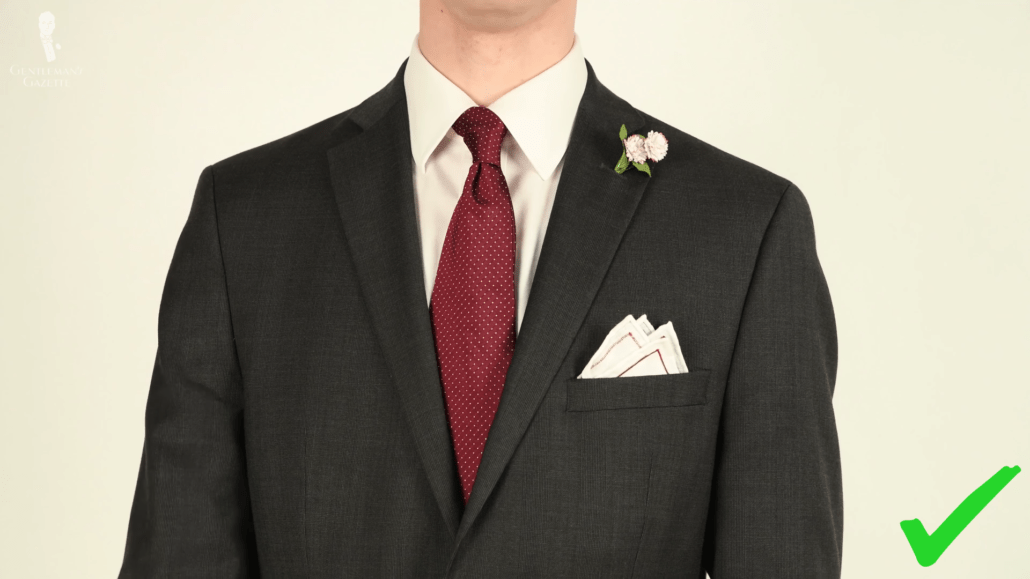
Opt for a dark suit for a black tie optional event
A Dark Suit
Your suit should always be very dark at a black-tie optional event to approximate the formality of the black tuxedos you'll be seeing. Wearing a black suit to a black tie optional event is an acceptable choice just so long as you don't try to make it look like an imitation tuxedo by pairing it with a black bow tie.
If you're not wearing a black suit then, charcoal and deep navy are also great choices. Because of its historical associations with country wear, brown suits should typically be avoided but if you do happen to have a suit that's a very dark brown, you could probably get away with it for a black-tie optional event.
Solid colored suits are your best choice here as well, though a very faint pattern such as a light and broad windowpane could also be acceptable. You can go with two pieces or three in your suit and it can be single or double-breasted, just so long as you are in fact, wearing garments that have all been sourced from the same cloth and you're following all of the guidelines we just mentioned.
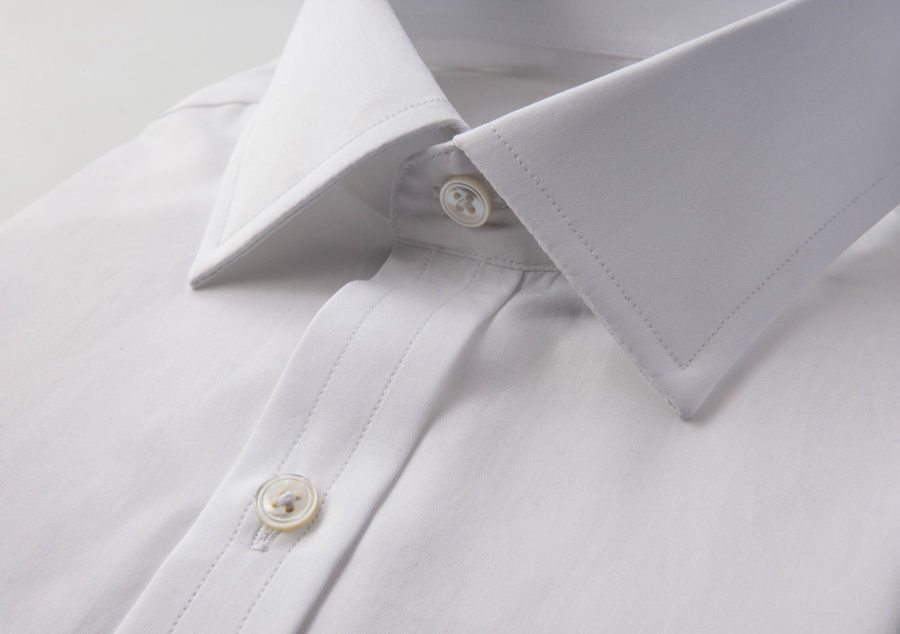
Semi-spread collar on a white dress shirt
A White Shirt
In order to provide a suitable amount of contrast with a dark suit you'll be wearing, your shirt should ideally be white for a black-tie optional event. You can get away with light blue in a pinch but it's best to avoid it and any other color, even if it's in a very light pastel shade, would be too informal for an event of this nature.
Similarly, you should try to avoid patterned shirts as well and instead again go with plain solid colors. French cuff dress shirts are ideal because they're also a standard feature of actual tuxedo shirts but if you have a shirt with barrel cuffs, you can wear that too and it will still be acceptable. On the topic of actual tuxedo shirts though, don't wear one with a suit. If you try to do this, it's not going to dress up the formality of the suit, it's just going to make you look mismatched.
Dark & Solid Neckwear
As with your suit, a tie worn to a black tie optional event should be dark monochromatic and solid instead of patterned. Small and very subtle patterns can work but solids are best. A black necktie can be worn here but as we just mentioned, black bow ties should be avoided with dark suits. So better choices than a black necktie would be a necktie or a bow tie in something like burgundy, navy, a very dark forest green, or a very dark plum. A smooth silk tie would be most formal though a tie with a bit of texture can work as well, perhaps something in a shantung silk or a wool grenadine, for example.
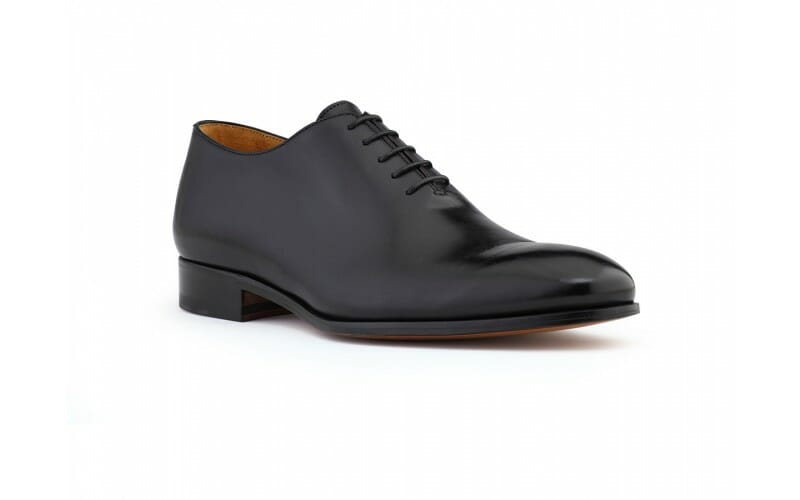
Wholecut Oxford Plain Toe Black Antique
Black Oxfords
Regarding shoes, black oxfords are your best bet here, plain and simple. They should ideally be plain toed, though a conservative cap toe is also perfectly acceptable. Black derby shoes, if well shined and conservatively styled, can also work here. However, derby shoes in any other color such as brown are too informal for a black-tie optional event as their open lacing system is more apparent and they're going to clash with the black oxfords and tuxedo shoes that you'll probably be seeing on other men at a black-tie optional event. If you do have a pair of oxfords in a very deep brown or oxblood color and they've been polished to a mirror shine, you could probably get away with wearing them but black is safest.
Socks
They should ideally match the color of your suit's trousers to be most conservative. You could match your socks to the dark color of your tie if you wanted to be just a bit more creative but definitely avoid anything in bright and flashy colors or loud patterns. Now is not the time for crazy socks.
Accessories
As with conventional black-tie, the area where you have the greatest amount of latitude in a black-tie optional dress code is with your accessories.
Starting with the cufflinks, for example, they can be silver, gold of any color, or any other solid colored metal and they can also feature designs and some conservative stones. Stay away from anything with logos or miniatures, however, as these are a little bit too whimsical for the nature of a black tie optional affair.
Tie bars, collar clips, and rings can also be worn so long as they are similarly conservative in nature. Also, try to match your medals at an event like this because it's a good idea.
Pocket squares are going to look best in white to echo the shirt perhaps with an edging detail in a similar color to that featured on your tie or your socks. You could wear a dark monochromatic pocket square but if you do this, you could run the risk of looking like your pocket square and tie came in a matching set which is never a good look. Linen is your best choice here in terms of fabric but silk is acceptable as well.
Finally, regarding boutonnieres, something understated and in a light color is going to be the ideal choice.
What Not To Wear
The "optional" in the name comes from the basic option a man has in either wearing a conventional black-tie ensemble or a conservative suit. There aren't really other options outside of these two basic molds.
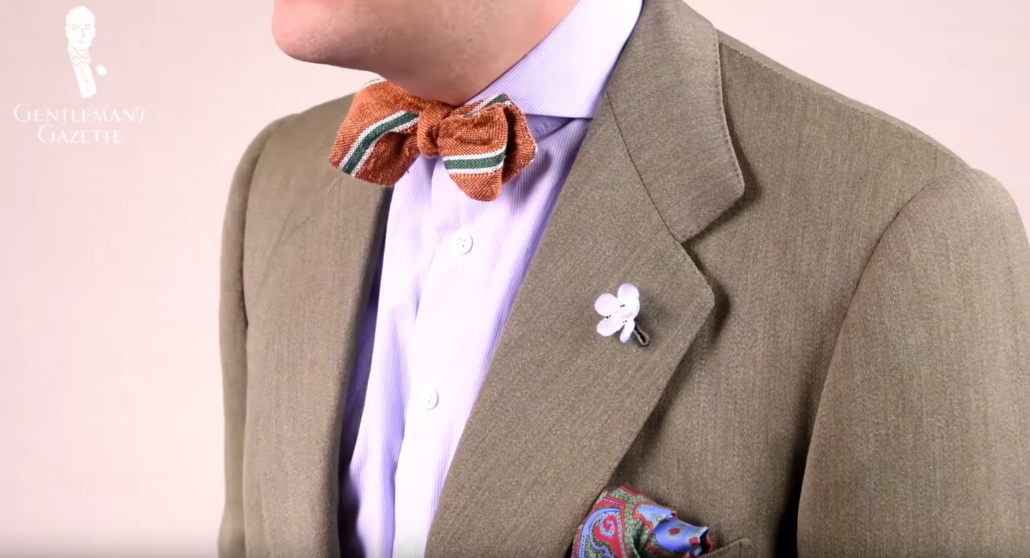
Definitely not a suit you should be wearing for black tie optional
A Light-Colored Suit
Given the fact that black-tie optional events as with standard black-tie events take place in the evening, a light colored suit would look informal and inappropriate. You can get away with something like medium grey in a pinch but it's best to stick to the dark colors we outlined previously.
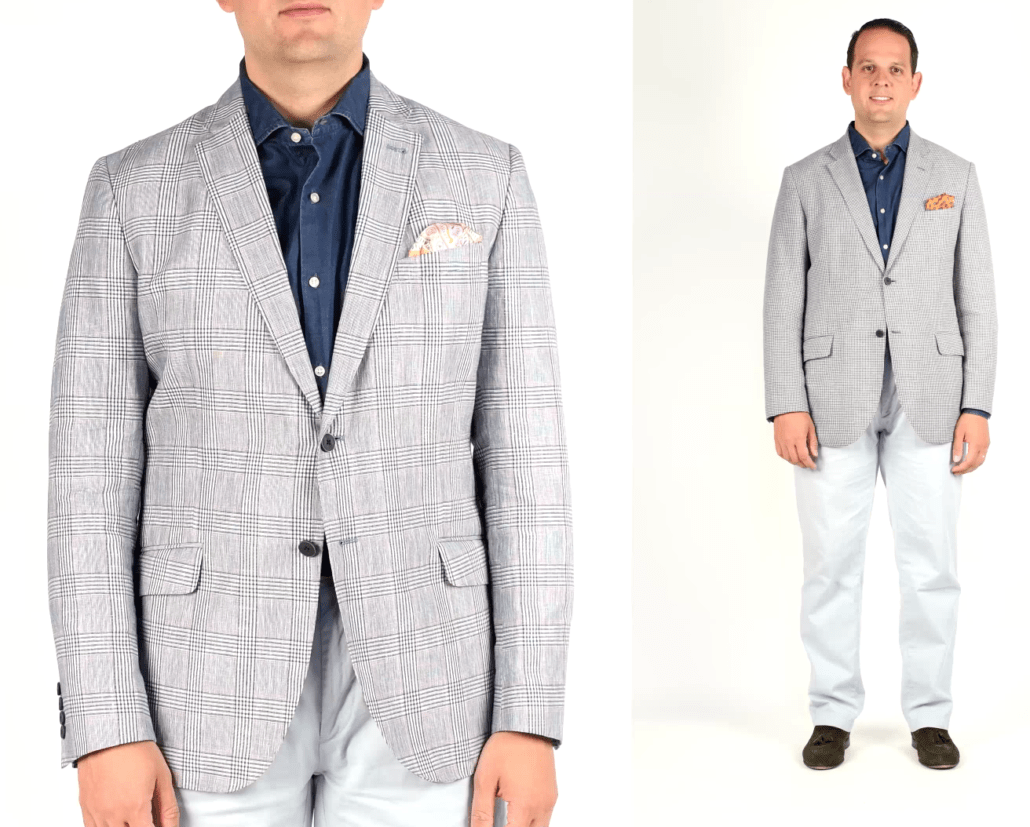
Patterned sport coat with a denim shirt
Combinations
Just as a tuxedo features a matching jacket and pants, except in the case of warm weather black tie but that's a different dress code for another video, your suit should also feature a jacket and pants, as well as an optional waistcoat that are all cut from the same cloth.
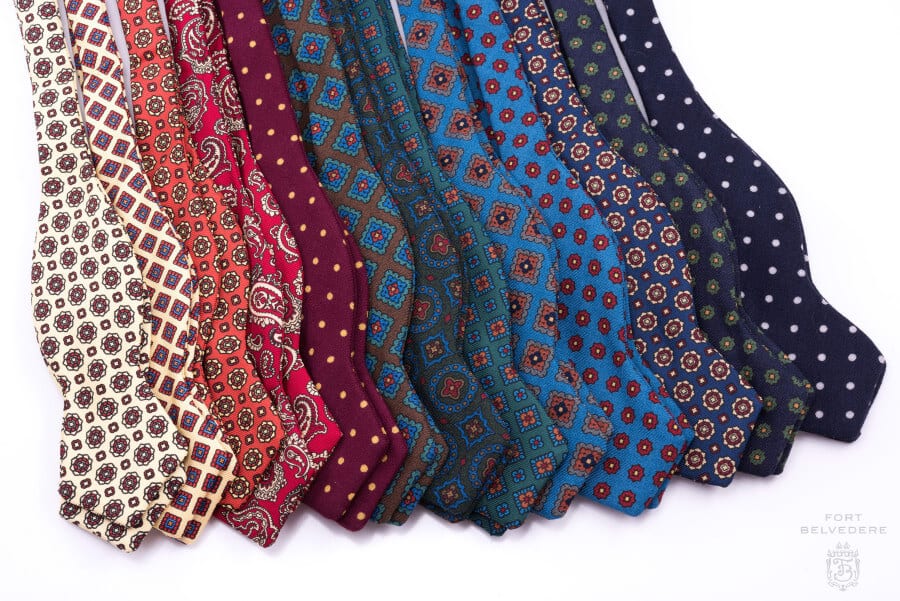
Assorted Pointed End Bowties – Handmade by Fort Belvedere
Heavily Colored / Patterned Neckwear
Just as you should be staying away from ties that are heavily patterned and brightly colored, an important point here, black-tie optional doesn't mean tie optional. Going tieless would simply be too informal a look for a gathering of this nature.
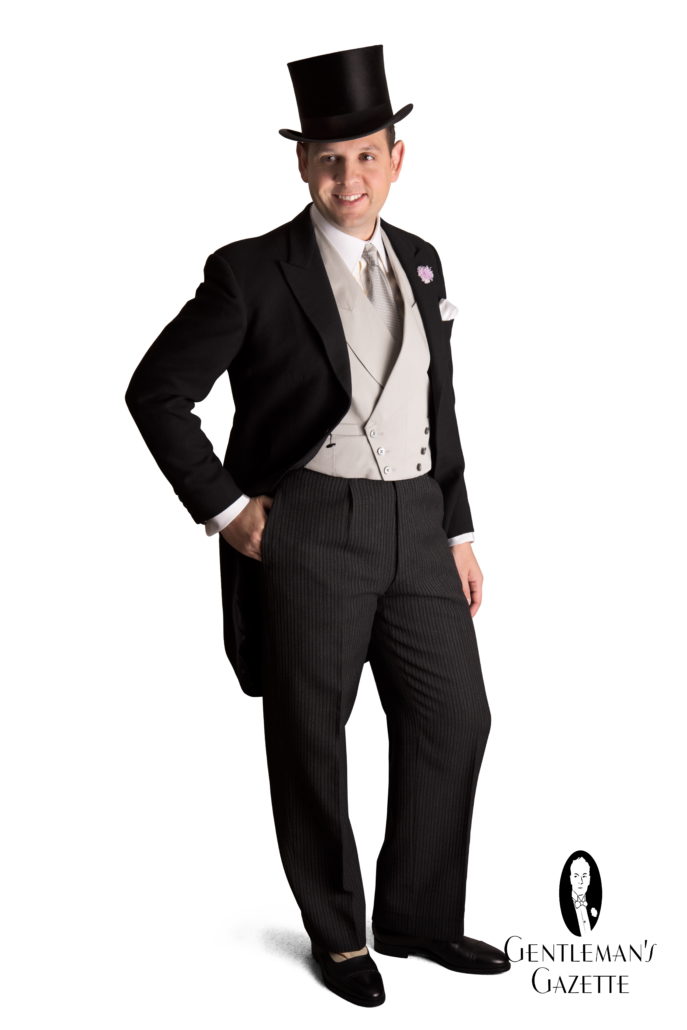
SRS in a morning coat – definitely do not show up wearing this ensemble
A Different Type Of Formal Ensemble
A final and major faux pas for a black-tie optional event is wearing a different type of formal ensembles such as white tie or morning dress. Morning dress would simply be inappropriate for an event taking place in the evening of course, and because one should never exceed the level of dress of a party's host, showing up to a black-tie or black-tie optional event in white tie would not be something you'd want to do.
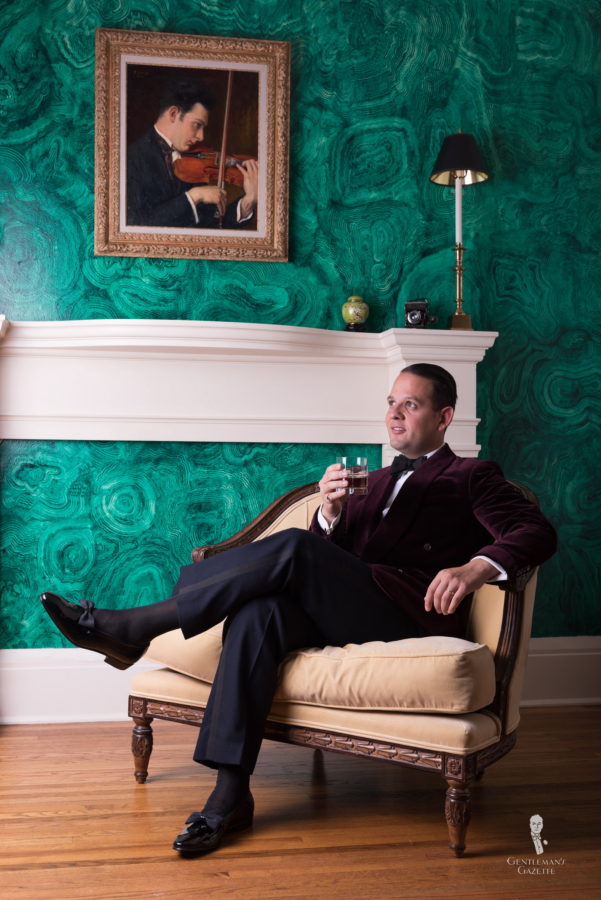
Sven Raphael Schneider wears a dinner jacket with black silk socks by Fort Belvedere and opera pumps
Hosting The Event
Let's turn our attention to the potential hosts of a party that chooses to incorporate black-tie on some level. We suggest that you, as a host, use a slightly different but much more clear terminology on potential invitations. This dress code is black tie preferred.
Black-Tie Preferred
This terminology makes it clear to the attendees that black-tie will be worn by at least some of the guests at the party and that it's being actively encouraged by the host. Still, it isn't absolutely required so a man who doesn't own or can't afford a tux doesn't absolutely have to wear one. Also, the black-tie preferred dress code means that you're probably not going to experience people who are trying to mix levels of formality when they show up to your party.

Do not go overboard with Creative Black Tie
Creative Black Tie
With creative black tie, you are free to digress from the traditional in one or two elements of your outfit. This is the dress code, in other words, where elements of the standard black-tie can commingle to some extent with elements of conventional businesswear. For example, you could pair a classic tux with a colorful and patterned bow tie, a pastel-colored shirt, or some playful crazy socks, maybe a more colorful pocket square, or a bold boutonniere, would work equally well here too. Don't go overboard and descend into full clown or costume wear here, of course, and remember that a little bit goes a long way.
Still, if the hosts have designated the dress code for the party as creative black-tie, it is best to loosen up a bit, respect their wishes, and have some fun with what you're wearing.
How to Dress for Black Tie Optional Wedding
Source: https://www.gentlemansgazette.com/tuxedo-black-tie-guide/etiquette/black-tie-optional-dress-code/